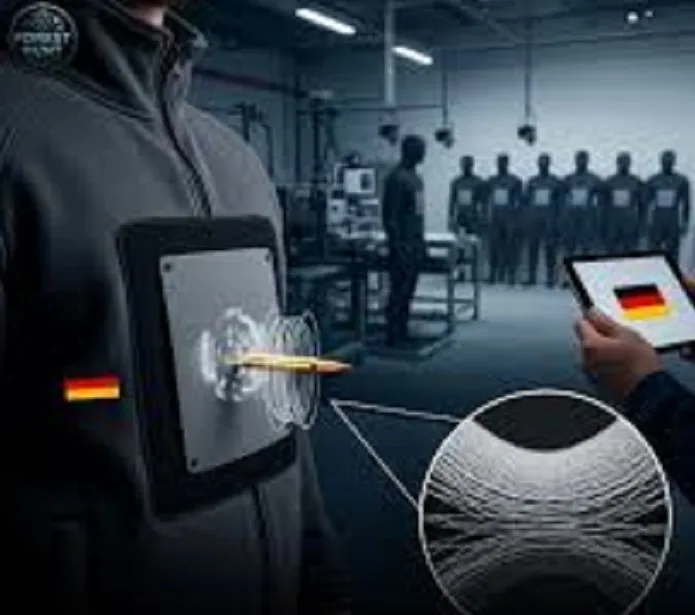A new generation of bulletproof clothing is emerging from textile laboratories, offering the promise of lightweight jackets that look like ordinary clothing but harden instantly on impact. Scientists are refining smart textiles that combine nanotechnology with shear-thickening fluids, potentially transforming body armor for soldiers, police officers and civilians.
How Smart Bulletproof Fabric Works
The core of the technology is the shear-thickening fluid, a suspension of nanoparticles that flows freely during normal movement but stiffens in milliseconds when struck with sudden force. When this fluid is integrated into fabric such as Kevlar or high-strength polyethylene, the result is a material that feels soft and flexible until hit by a bullet, knife or blunt object.
Also Read: ICAC Launches Carbon Footprint Tool to Track Emissions in Cotton Farming
Researchers in Europe, the United States and Asia have tested these nanotechnology-based textiles for more than a decade. Early studies at the University of Delaware demonstrated the potential of so-called “liquid armor.” More recent research has shown that fabrics treated with shear-thickening fluids absorb more energy than untreated cloth, raising hopes for lighter, more comfortable flexible body armor.
German Scientists Linked to Viral Claims
Recent viral reports on social media claim that German scientists have developed a jacket that looks like regular fabric yet becomes bulletproof in less than a second. Some posts credit the Fraunhofer Institute, one of Germany’s leading applied research organizations, with leading the project.
However, no official Fraunhofer press release or peer-reviewed study confirms the specific jacket described online. While Germany is active in advanced textile innovation, analysts caution that the viral claims remain unverified. Experts note that while the science is proven, consumers should wait for independent validation before assuming such products are market-ready.
Applications Beyond Military and Police Use
If fully commercialized, bulletproof clothing could extend far beyond the defense sector. Sports manufacturers are studying the technology for helmets and protective pads. Construction and industrial companies see potential for lightweight jackets and gloves that harden on impact. The automotive industry is also exploring how smart textiles could be used in car interiors to provide additional crash protection.
Embedding protective clothing into everyday wear could eventually allow journalists, security guards, or even ordinary citizens to enjoy enhanced safety without carrying heavy gear. Industry analysts believe the technology could mark a turning point in the global body armor market, which continues to grow with rising demand for personal security.
Challenges Before Market Adoption
Despite progress, several hurdles remain before consumers can buy flexible bulletproof jackets. Certification under international ballistic standards requires extensive multi-hit testing, environmental durability checks, and proof of long-term reliability. Scientists are still addressing questions about washability, nanoparticle stability, and cost-effective production at scale.
Until those challenges are solved, bulletproof fabric will remain largely in the laboratory. Still, with governments, defense contractors and consumer industries investing heavily in nanotechnology textiles, the race to bring soft, lightweight armor into daily life is gathering speed.









